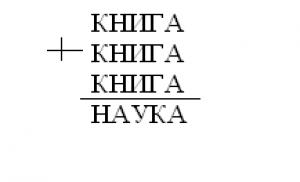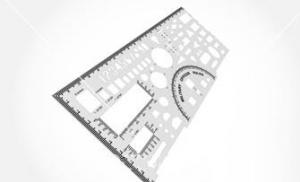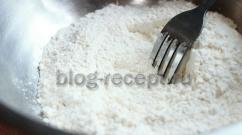How long does it take for the body to recover after a caesarean? Chance of spontaneous delivery after caesarean section
In the whirlpool of surging feelings of love and tenderness for the little creature and fatigue from everything that happened for almost 20 hours, one thought pulsated in my head like a bright spot: “I gave birth. HERSELF!!!"
My first birth was in January 2009, for medical reasons, due to the lack of labor, an emergency was performed. Subsequently, I asked the gynecologist who observed me in the postpartum department about the possibility, to which I was told that it was quite possible. To be honest, I did not believe it and was mentally prepared for the fact that our second child would be born with the help of an operation. The second we planned in five years.
Somewhere in the middle of March 2010, my husband and I found out that we would soon become parents for the second time - the test showed the coveted two strips. I still remember the state of shock and depression that took possession of me at the moment when I saw the result of the pregnancy test: after all, so little time had passed after the first birth, I was afraid that I might simply not be able to bear the child because of the “fresh” scar on uterus. The husband, on the contrary, was very happy and began to wait for his daughter.
I went to counseling the next day. Our local doctor looked at me with great surprise when I asked: “So what, will you keep it?” I answered in the affirmative.
"I had to hear a lot about the irresponsible attitude towards my own health, that there is a great risk of leaving the first child without a mother, but neither the doctor's "reprimands" nor the offers of relatives to have an abortion changed my decision to give birth.
To learn more about what difficulties you may encounter during pregnancy after a caesarean section, as well as to get the most information about natural childbirth after surgical delivery, I advanced to the vastness of the worldwide network. Of course, there was a lot of information, including quite contradictory ones: from information that subsequent births after cesarean section are possible only through surgery, to statements that natural childbirth after caesarean section are possible, regardless of the indications for which the operation was previously performed.
Of course, as always, the truth is somewhere in between. After summarizing all the information I learned, I realized the following:
“The ability for a woman to give birth on her own after a caesarean section is primarily due to the technique of performing a caesarean section.
In the case when a woman was made corporal cesarean section(vertical seam) Unfortunately, natural childbirth is not possible. Fortunately, this was not my case, since I have a horizontal suture in the lower segment of the uterus, which in itself already gave me a chance to give birth on my own.
What are doctors afraid of?
What are doctors afraid of, why is the problem of choosing the method of subsequent delivery for women who have undergone caesarean section so relevant? Of course, everything is due to the high probability of such a complication as uterine rupture along the scar.
According to statistics I gleaned from the worldwide web, the risk of uterine rupture along the scar is from 1% to 5% of the total number of women who give birth spontaneously after a caesarean section. It was the rupture of the uterus that I feared. The fact is that, in connection with such an unexpected pregnancy, I did not have time to conduct a study of the scar, which could give the most reliable and full information about its consistency, and hysteroscopy during pregnancy is impossible.
"Rupture of the uterus is likely with the insolvency of the scar, which is determined not only by its thickness (less than 3.5 mm), but also by the fuzziness of the contours, the discontinuity of the scar.
Pregnancy management of women with a scar on the uterus, as it seemed to me, requires closer attention from the gynecologist. However, comparing with the management of the previous pregnancy, I did not find any striking differences. The only thing is that during the first ultrasound at 12 weeks, the doctor carefully, as far as the ultrasound diagnostic method allows, examined the scar. As it turned out, it was thin (5 mm), but at the same time it was even, with a clear contour.
Doctor's Choice
The more the term of childbirth approached, the more seriously I began to think about the possibility of giving birth on my own, about choosing a maternity hospital and a doctor. In the end, I came to the decision that I would give birth in the same maternity hospital as the first child, and without any prior arrangements with the doctors. However, my husband did not support my decision and took my word that I would go for a consultation with a familiar gynecologist in order to subsequently conclude an agreement for a service delivery.
We went to the doctor. At the very beginning of the conversation, the doctor unequivocally told me that he considered it necessary to have a second delivery by caesarean section: “There is no need to perform feats!” I can’t say that I was driven by a thirst for achievement, but I refused the services of this doctor. At that time, I did not have any indications for surgery, there were all the conditions under which delivery is possible naturally:
- A pregnant woman has only one wealthy scar on the uterus.
- The first operation was carried out according to "transient" indications - the so-called indications for surgery that first arose during the previous birth and may not necessarily appear in the next.
These include:
- chronic intrauterine fetal hypoxia - insufficient oxygen supply to the fetus during pregnancy. This condition can occur for various reasons, but does not recur in the next pregnancy;
- weakness of labor activity - insufficiently effective contractions that do not lead to the opening of the cervix;
- breech presentation - the fetus is located with the pelvic end to the exit from the uterus. This position of the fetus is not in itself an indication for surgery, but is a reason for caesarean section only in conjunction with other indications and is not necessarily repeated during the next pregnancy. Other abnormal positions of the fetus, such as the transverse position (in which case the child cannot be born spontaneously), may also not recur during the next pregnancy;
- large fruit (more than 4000 g);
- premature birth (premature births are considered to occur before 36-37 weeks of pregnancy);
- infectious diseases detected in a previous pregnancy, in particular an exacerbation of a herpes infection of the genitals, shortly before childbirth, which was the reason for a caesarean section, does not necessarily occur before the next birth.
- The first operation must be performed in the lower uterine segment with a transverse incision.
- The postoperative period should proceed without complications.
- The first child must be healthy.
- This pregnancy should proceed without complications.
- An ultrasound examination performed at full-term pregnancy showed no signs of scar failure.
- There must be a healthy fetus.
- The estimated weight of the fetus should not exceed 3800 grams.
Antenatal hospitalization
On the term, I took a referral to the hospital, because in my case, mandatory prenatal hospitalization was assumed. True, I went directly to the hospital at 39 weeks. On November 1, 2010, I went to the department of pathology of pregnant women for antenatal hospitalization, my PDR was on November 7. The doctor leading our ward turned out to be a pleasant young woman. After the examination and tests, she supported me in the desire to give birth on my own. The date of birth was determined on November 5 with the help of a stimulating gel.
On the night of November 2-3, I woke up from light contractions that did not stop until the morning, but were not very strong and did not increase. On November 3, my husband came for me and took me home for the day, which made everyone incredibly happy, especially my son. In the evening, my husband took me to the hospital, and we decided that the next day he would come for me - he would take me for a walk. In the hospital time runs slowly, so I went to bed early, at 10 o'clock in the evening. However, around 11 I got contractions again, as on the previous night. I could not sleep and walked along the corridor.
At about three o'clock in the morning, the midwife on duty, seeing my staggering, made me count the contractions, it turned out that they were quite regular and long.
They called a doctor, the examination showed a dilatation of 1.5 fingers (in fact, it was about the same during the examination on November 1). They decided to wait and not take me to the maternity ward. However, at six in the morning, after being examined by another doctor, it turned out that the disclosure of 3 fingers, and they nevertheless sent me to give birth (my child did not wait for any stimulation and determined when he was born).
Maternity ward
In the maternity ward, I got a nickname: I was called " Scar". The very process of childbirth, I think, was no different from other women in labor. The contractions, which for some reason turned out to be no less long than in the first birth, I endured stoically: I breathed, listened to music and walked along the corridor all the time. In the process of childbirth, the doctors performed the same manipulations with me as with other women in labor: CTG, examination; inspection, CTG. The only thing, the department at the first examination asked: “Are you sure you want to give birth yourself?” and, having heard an affirmative answer, she said: “Well, give birth!”
"When the attempts began, I was faint-hearted and asked to be put under the knife, to which they told me: "Let's go give birth!" I went, and somewhere in the corridor I could hear: “Go quickly, the Scar is giving birth.”
I will not describe the process itself, although I must say that in the process of expelling the fetus, several funny moments and dialogues with doctors took place. Outcome: I gave birth, myself! Contrary to all ultrasound data, the fetus turned out to be quite large (4000 g), so an episiotomy was required, otherwise I had no tears or injuries.
While my lovely baby girl was being washed-measured-weighed, I was put under intravenous anesthesia and had a manual examination of the uterus, which is a must for all women with a uterine scar who have delivered vaginally. No seam defects were found.
The postpartum period was no different.
So to speak, a postscript: today, almost four months after giving birth, I am a completely happy mother of two children.
"Comparing the feelings after childbirth through caesarean section and natural childbirth, I can definitely say that after the second birth I have a feeling of naturalness and completeness of the process.
Recovery after childbirth in the second case was faster and easier. In my example, it can be seen that the possibility of natural childbirth after a caesarean section is quite real. I hope that my story will help women who find themselves in the same situation to go through the whole pregnancy with less anxiety and initially positively tune in to childbirth.
Everything will work out for you!! Health to you and your children!
A caesarean section is not at all a reason not to dream about motherhood a second time and refuse to experience the joy of rocking the crumbs in your arms, excitement from the first step, happiness to tears from the first word: “Mom”. But thoughts about the terrible scar that ruined the stomach, which had just become invisible, about bleeding, ligature fistulas, pain - all this recreates a completely undesirable picture in the imagination. But any mother dreams of seeing her baby as soon as he was born, hearing his first cry, with which he calls her, giving mother's milk to the baby right in the delivery room. So is natural childbirth possible after a previous caesarean section?
Subsequent births after artificial delivery
Some time ago, women who once underwent surgery, at the birth of their second child, were “doomed” to fall under the surgical knife again. The view of modern physicians on childbirth after caesarean section has changed dramatically. Now, in many cases, expectant mothers are allowed to give birth on their own, as nature originally intended, but only if there are no certain contraindications for this (we will consider them later).
Natural childbirth after caesarean is allowed only when the body has fully recovered from the previous surgery. This should take two or three years. By this time, the scar on the uterus will form with a predominance of muscle tissue and become almost invisible, the woman will gain strength, get stronger, get rid of anemia (bleeding, which is inevitable after cesarean, always leads to a sharp decrease in hemoglobin). If for some reason a woman cannot postpone the next pregnancy for such a period, then doctors recommend that she endure at least 18 months, but then independent childbirth falls under big question. Even earlier repeated pregnancies are clearly subject to artificial delivery.
A positive decision in favor of natural childbirth after caesarean section is made only if:
- the recommended period between the previous and present pregnancies is maintained;
- a new pregnancy is singleton, the fetus itself weighs less than 3.5 kg;
- there is no threat of scar divergence (if during the previous delivery it was made transverse);
- there is only one scar, it is in a suitable condition, almost invisible;
- the placenta during gestation was fixed outside the scar (for example, on the back wall of the uterus);
- there are no contraindications;
- the child is full-term, diligence is correct.
When and why after caesarean you can not give birth yourself
How to give birth after a cesarean section is decided individually in each case, the doctor will be able to make such a conclusion after the 35th week of pregnancy, after an ultrasound is done and the condition of the fetus is assessed.
Sometimes a woman is assigned only an operation, and this causes serious concern for the expectant mother. Why can't you give birth after a caesarean section? Indications for the appointment of an operation for artificial delivery are:
- large fetus (child weight from 3.5 kg) with a narrow pelvis;
- improper diligence of the baby;
- pregnancy complications (eg, placental abruption, acute bleeding, threatened uterine rupture);
- closing of the birth canal;
- multiple pregnancy;
- previous transfer of two caesarean sections (after that, doctors insist on sterilization of the fallopian tubes);
- identification in the mother of certain diseases that can harm the baby during the passage of the birth canal (HIV, hepatitis C, genital herpes, and others);
- myopia;
- pelvic anomaly.
Another important point, which is taken into account when choosing the type of the next birth - which incision was made to the woman during the previous birth. If a classic section was performed (i.e., a longitudinal incision along the abdomen, starting from the navel and descending down to the pubic zone), then the woman in labor will definitely be shown surgery. In those who gave birth themselves for the second time after caesarean, respectively, the indication was a transverse scar running along the suprapubic fold. Dissection with this incision affects only the skin tissues and subcutaneous fat.
Features of preparation for subsequent childbirth after cesarean
 Preparation for the next birth, if a woman knows that she is planning a second child, should begin from the moment she is discharged from the hospital. It is necessary to pay attention to whether the doctor indicates in the extract:
Preparation for the next birth, if a woman knows that she is planning a second child, should begin from the moment she is discharged from the hospital. It is necessary to pay attention to whether the doctor indicates in the extract:
- indications for which it was decided to carry out the operation;
- cesarean method;
- stitching technique;
- applied suture material(synthetic or catgut threads);
- duration of childbirth;
- complications during the operation;
- features of the postoperative period, including measures taken to prevent inflammation and other complications.
It is very important that the next pregnancy is pre-planned, with all the necessary preparatory and preventive measures. This stage begins with a visit to the gynecologist in order to assess the condition of the scar (it must be formed by muscle tissue, become almost invisible) and a general diagnostic examination of the expectant mother. It is important to identify all pathologies in a timely manner and undergo a course of treatment. For example, after a cesarean, thrush often develops, intrauterine inflammatory processes can be observed. Preparation should include the treatment of common diseases.
Is it possible to count on the birth of the next baby in a natural way, the doctor will say after they have been carried out:
- hysterography (X-ray examination using a contrast agent to obtain images in frontal and lateral projections). This examination is possible not earlier than six months after the operation;
- hysteroscopy (visual examination using an endoscope of the uterine cavity and scar). Such an examination is carried out one year after the operation (minimum - after 9 months).
When planning a second pregnancy after a caesarean section, a hysteroscopy is mandatory. It is very important to assess the condition of the scar, because if it is formed by connective tissue, pregnancy will be dangerous for both the fetus and the mother.
The final decision on how the delivery will be carried out is made closer to the birth, at 35-36 weeks, taking into account all indications and contraindications.
A caesarean section is a delivery operation during which the newborn is removed through a specially made incision in the peritoneum and uterus. Today, such surgical intervention is the most common in obstetric and gynecological practice due to a large number pathologies in pregnant women. A caesarean section can be elective or emergency if there are complications during independent childbirth. And if everything is clear with the indications for surgery and the course of the procedure, then the question arises, how is the birth after cesarean? Is it possible to have a second child naturally?
Absolute contraindications to natural delivery after operational delivery no. But it is worth considering several mandatory factors so that the next pregnancy and childbirth after a cesarean end safely. With this operation, a cavity incision is always made in the abdominal cavity and the body of the uterus, after which a scar remains on them, which needs time to heal. You should know that at any time during pregnancy, due to stretching of the tissues of the peritoneum, it can disperse. This is also possible during childbirth due to the contraction of the overstretched muscles of the uterus.
Therefore, childbirth a year after cesarean is undesirable. A woman must be carefully protected to avoid conception. Also, during this period, you can not have an abortion, because the mechanical effect on the walls of the uterus can lead to partial or complete rupture of the suture.
Gynecologists recommend re-pregnancy only after 2-3 years after the birth of the first child through surgery. After this time, the scar is considered wealthy, that is, well-healed, and the muscle tissue near it is completely restored. It is elastic, well reduced during contractions during labor. From this moment comes a favorable period for bearing next child, and repeated births after caesarean section will be successful.
If pregnancy occurs 5 or more years after surgery, then during childbirth, the suture on the uterus may also disperse, as it will be too rigid and difficult to stretch.
Why is it desirable to have a natural birth after a caesarean?
Is natural childbirth possible after a caesarean section? Yes, and the gynecologist will not insist on a second operation if there are no other contraindications. Moreover, doctors are inclined to believe that a natural second birth after a cesarean is even desirable. The probability of successful delivery in a natural way in this case reaches 70%.
Positive points in favor of vaginal delivery after cesarean:
- Independent repeated births after a caesarean section are safer for both the mother and the newborn. They enable a woman to give birth repeatedly in the future.
- The operation without serious consequences can be done up to 3 times. With each subsequent risk for the child and the mother increases. The second childbirth in a row, which took place with the help of caesarean, dramatically reduces the likelihood of spontaneous delivery in the future. And childbirth after 2 caesarean sections almost always takes place with the help of surgery.
- After a normal birth, a woman returns to normal much faster. Reproductive function recovers faster. The risk of complications is minimal compared to a repeat caesarean, after which a violation is not excluded menstrual cycle and the development of other consequences. This can lead to difficulties with re-conception.
- When a baby is born in the usual way, he produces a stress hormone that contributes to better adaptation to the surrounding world.
Indications for repeat cesarean

Natural childbirth after caesarean section is not possible with the following factors:
- detection of signs of insolvency of the scar according to ultrasound data and symptoms, especially if less than 2 years have passed after the first such operation;
- longitudinal incision after the first caesarean;
- two or more scars from previous artificial births;
- attachment of the placenta in the area of the uterine scar;
- narrow pelvis;
- a long period between births (5 years or more);
- oncological lesion of any organ of the reproductive system, for example, an ovarian tumor;
- deformation of the pelvic bones;
- pelvic or transverse;
- too much ;
- diabetes mellitus in pregnancy or serious problems with vision - retinal detachment, a high degree of myopia;
- cardiovascular disease and nervous system, as well as the expectant mother;
- fetal developmental anomalies or other pathologies that arose during fetal development ().
Preparing for independent re-birth after cesarean
To future pregnancy was normal and ended in natural childbirth, preparation for this should begin immediately after the first caesarean. You should follow all the doctor's recommendations given to the woman in labor for recovery in the postoperative period. During the first 2 years, contraception is required to prevent re-pregnancy. You cannot have an abortion during this period.
Before conception, both a woman and a man should be examined for diseases that can affect the course of pregnancy and be a contraindication to natural childbirth. A woman must definitely undergo gynecological diagnostics to assess the condition of the scar on the uterus (hysteroscopy, hysterography and ultrasound procedures).
For the final choice of the method of delivery, the woman is hospitalized in a planned manner at 37-38 weeks of gestation. In the hospital, she undergoes a complete comprehensive examination. The condition of the fetus is also assessed using cardiotocography, dopplerometry and other diagnostic methods.
Features of the process of conventional childbirth after cesarean
Independent childbirth after caesarean proceeds according to the usual scenario, with contractions, attempts, the birth of a baby and the release of the placenta.

But there are some points that are contraindicated in natural childbirth after cesarean:
- Stimulation is strictly prohibited. An injection of enzaprost or oxytocin can cause a rupture of the suture in the uterus.
- You can't start pushing too early.
- When trying, the doctor does not use the method of pressure on the abdomen.
- Anesthesia is excluded so as not to miss the pain from the rupture of the scar.
After the placenta is released, the obstetrician-gynecologist examines the walls of the uterus with a sterile glove, especially the suture area, in order to exclude partial or complete rupture. If the suspicions are confirmed, then the woman in labor is urgently operated on. If complications arise during spontaneous childbirth, an unscheduled caesarean section has to be done.
Complications of natural childbirth after a previous cesarean:
- A healed incision on the uterus can affect the course of bearing a child. Every third woman in the position has a high risk of premature termination of pregnancy at any time.
- Because of the seam, some develop. As a result, the fetus does not receive a full amount of nutrients and oxygen for development.
- Rupture of the uterus along the seam from a caesarean is the most dangerous complication during childbirth. Often in the background severe pain it proceeds without severe symptoms. Therefore, the doctor in the process of labor constantly monitors the state of the seam, probing it through the anterior abdominal wall. It should remain smooth, painless. It is important to monitor the quantity and nature spotting and focus on the complaints of the woman in labor. An unnatural weakening of labor, the appearance of pain in the navel, nausea or vomiting may indicate a rupture of the body of the uterus along the seam. Ultrasound helps to objectively study the condition of the scar. When a violation of its integrity is confirmed, they urgently switch to surgical delivery.
Is it possible to give birth on your own after two cesareans?
Natural childbirth after two or more cesareans is unlikely due to the high risk of serious consequences, including:
- Fetal hypoxia.
- Rupture of the body of the uterus along one of the scars.
- Soldering process. Tightening of the intestines leads to intestinal obstruction or constipation, adhesions on the tubes or ovaries - to infertility.
- Postoperative hernia.
A woman can give birth on her own if at least 2-3 and no more than 4 years have passed after the first birth through a caesarean section. Also, the prerequisites are: viability of the scar, the absence of contraindications in the mother, the normal condition and full development of the fetus.
Useful video about natural childbirth after cesarean section
I like!
Only 30% of women give birth naturally after a caesarean section. Although a few years ago even this figure was impossible, because a caesarean section once - a caesarean section always. This is exactly what obstetricians thought. Today, in the West, 70% of women give birth vaginally after a caesarean section. This practice is widespread in our country as well.
Every woman aspires to. The benefits of vaginal delivery have been discussed many times. However, this does not mean at all that caesarean section has some disadvantages. Indeed, very often, it is thanks to the operation that long-awaited children are born in families where this was impossible due to a number of obstacles.
In life, a paradoxical situation sometimes happens: women who have given birth naturally are afraid to even think about a second vaginal birth. If you give birth a second time, then only under general anesthesia they say. Others, on the contrary, after painful postoperative days, in spite of everything, strive to give birth naturally. All of these are our emotions. And here leading role Still, there are medical indications. And no matter how much we would like to give birth ourselves, if there are serious indications, then the operation cannot be avoided. And is it necessary to risk health, yours and your baby, and sometimes even your life?
So, the first birth was resolved by caesarean section. Naturally, holding a tiny first-born in her arms, who will think about subsequent children. However, it's worth it. Especially in this situation. When leaving the hospital, be sure to pay attention to the extract. It must clearly state:
- according to what indicators did a caesarean section;
- duration of childbirth;
- caesarean section method;
- method of suturing the incision on the uterus;
- used suture material;
- complications during surgery;
- volume of blood loss;
- during the postoperative period;
- methods of prevention of infectious complications;
- recommendations for rebirth.
It is this extract that will be very useful to you when planning and delivering subsequent pregnancies.
Why is it so important to give birth naturally after a caesarean section?
First, natural childbirth is much safer for both mother and baby. The risk of complications is markedly reduced, but a second caesarean section only adds postoperative complications.
Secondly, a cesarean section can be performed no more than 3 times, and even then with a huge risk to the health of both the woman in labor and her baby. Natural childbirth after cesarean makes it possible to give birth to many children.
Thirdly, you will not have to suffer again in the postoperative period. Nevertheless, after a vaginal birth, a woman returns to normal much faster.
Fourth, after repeated caesarean section, many women have menstrual dysfunction, resulting in a reduced ability to become pregnant again.
Fifth, in natural childbirth, children produce a stress hormone, which contributes to better and faster adaptation to the external environment. Therefore, why contradict nature, if there is no serious evidence for it?
Indications for repeat caesarean section

If at least one of the points takes place in your situation, then a second caesarean section is simply necessary. Otherwise, you risk your life: both yours and your baby's.
Complications of natural childbirth after caesarean section
The most dangerous (often fatal) and the only complication of natural childbirth after cesarean is uterine rupture along the scar. It is because of him that many women are so afraid to give birth vaginally. And not every doctor is ready to take responsibility for the outcome of such childbirth. Although statistics state that uterine rupture occurs in less than 1% of cases, no one wants to be included in this statistic. Therefore, before re-birth after a caesarean section, it is so important to weigh the pros and cons and make the safest possible decision.
Preparation for natural childbirth after caesarean section
As mentioned earlier, after caesarean should begin immediately after the first birth. Follow all the doctor's instructions so that the scar on the uterus is formed correctly. There are several ways to monitor the condition of the scar: hysteroscopy, ultrasound, hysterography. Before you need to go through these examinations and determine the readiness of the uterus with a scar for bearing and giving birth to a baby. The most favorable picture for repeated pregnancy and childbirth without complications is a scar, which is almost invisible. It is also important that it is formed from muscle, and not from connective tissue.
Abortions are extremely unfavorable for the scar. Therefore, after a caesarean section, think carefully about contraceptive methods to avoid unwanted pregnancy. Doctors recommend taking a break for 2-3 years after a caesarean section. Early rebirth can be very dangerous. It is also undesirable to delay with subsequent births.
childbirth
Vaginal birth after cesarean proceed according to the usual "scenario": contractions, attempts and the birth of the placenta. But there are also some differences. It is advisable to hospitalize a woman with a scar on the uterus in advance to the hospital. The final decision on what this delivery will be is made at the 38th week of pregnancy, having studied. For a woman in labor and her child, spontaneous childbirth without medical intervention will be the best. Previously, such patients were opened the bladder in advance and waited for contractions. Today, this method is abandoned in order to avoid complications during labor. Naturally, a woman during the entire period of childbirth should be under the supervision of medical staff. Often, when doctors perform an urgent unscheduled caesarean section.
To this day, there are disputes about the possibility of using in such childbirth. Most believe it is undesirable not to miss pain with uterine rupture.
But what is definitely strictly prohibited is rhodostimulation. or enzaprosta can cause uterine rupture along the scar. Also, don't push too early and use "abdominal pressure" methods. After the birth of the placenta, the doctor examines the uterine cavity and checks the condition of the scar.
Right choice
Only the right choice your situation will be the decision you make with your doctor. Naturally, a second caesarean section has much more risks and complications. But sometimes natural childbirth is impossible, and children should be born in spite of everything. This same such happiness - repeated motherhood and fatherhood. Most importantly, believe in yourself and do not let bad thoughts come to you!
Successful childbirth!
Specially for- Tanya Kivezhdiy
From Guest
The first time she gave birth herself from the first contraction to childbirth, it took 3.5 hours, everything went fine! And the second time there was a CS at 23 weeks, it all ended in a trogically complete placental presentation and here is the result. There are no babies. After the CS, everything seems to go without complications. So I want to get pregnant again and give birth to myself. Just not CS!
Women who have undergone a caesarean section are ambivalent about this.
Many women are of the opinion that it is completely safe, and most importantly painless, and henceforth they give birth only in this way.
Others, on the contrary, dream of knowing motherhood from the very beginning, and it is important for them that the birth proceeds fully.
Natural childbirth after caesarean section: fairy tale or myth?
Women who have had a caesarean section before ask one the only question whether they can ever give birth on their own. Not so long ago, this question had an unequivocal answer - no, but today everything has changed.
Medicine is on enough high level development, so the possibility of independent birth, of course, is. This is due to many innovations in gynecology:
1. Threads for seams use semi-synthetic, the fabric is restored quickly and completely.
2. The uterus is cut horizontally, not longitudinally: it is possible to avoid large blood loss, no complications, and most importantly, this gives the woman the opportunity to give birth on her own next time.
However, even today, doctors are forced to make vertical incisions in the top of the uterus: in the event that the baby is in danger, with an incorrect presentation. Unfortunately, it is impossible to give birth naturally after this. They will not be allowed to give birth on their own and in one more case, when a caesarean section was performed several times.
Natural birth after caesarean section: predictions
Until now, the question that worries many causes a lot of controversy among doctors and scientists: women simply live with thoughts that they will someday have a baby in a natural way, and of course they can be understood. But many gynecologists insist that this should not be done, because the development of numerous consequences is difficult to avoid:
1. The most dangerous thing that can happen is that the uterus will burst at the seam. This leads not only to the death of the fetus, but also to the woman in labor.
2. After operations, there may be adhesions that pull the ovaries and tubes. Naturally, natural childbirth will be complicated in this case.
3. Neurological complication.
4. Hernia after surgery, internal organs shift or fall.
If, despite all these risk factors, a woman still wants to give birth on her own after a cesarean, then doctors are unlikely to support her. There is still a way out of the situation, the future woman in labor gives a receipt that, in which case, she will not have any claims against the doctors.
Undoubtedly, there are happy mothers who can give birth to a baby on their own even after two operations, but you need to understand that this is just an exception to the rule.
Natural childbirth after caesarean section: how to prepare for them
In order for your next sales to go differently than the previous ones, namely in a natural way, you need to prepare for them in advance. Moreover, you need to start the preparatory process immediately after the cesarean was done and the woman was discharged home:
1. A woman should have a certificate in her hands, or rather an extract from the hospital, in which experts indicate the following points:
What was the reason for the operation?
How long did the birth process take, as well as the duration of the anhydrous period;
The method used to perform a caesarean section.
The material used to close the incision.
How much blood did the woman in labor lose?
Were there any complications?
What medications did the woman take?
2. After the birth of a child and the next three years, you may not think about conceiving a second one. During this time, the scar will be fully formed, and the uterus will be able to fully recover.
3. In the intervals between childbirth, a woman, of course, can become pregnant, but you need to know that it is dangerous to have an abortion.
4. Of course, it will be better if the spouses plan the next pregnancy in advance. Both partners must be tested first. A woman needs to examine the scar, as well as get a resolution from the doctors.
Registration, as well as the management of pregnancy in women who give birth after cesarean, is practically no different from ordinary women in labor. It is possible that the examination will have to be carried out much more often, to take tests, to do ultrasound more than it should be. However, if future mom became pregnant with twins, then most likely she will be put on storage in the third trimester, so that natural childbirth can go through fully.
As a rule, women are always sent to go to the hospital before labor occurs. The whole point is that amniotic fluid may leave much sooner. There is simply no question of the birth of a child in water or at home. Indeed, in women with a scar on the uterus, the placenta rarely leaves on its own and specialists have to intervene.
A caesarean section is not a sentence, even doctors always insist on a natural birth, if there are no contraindications for this.
Natural childbirth after caesarean section: contraindications
Natural childbirth after the first operation will be prohibited by any doctor if the likelihood of rupture of the suture is high. This can end tragically, both for the baby and for the mother. That is why there is a whole list of contraindications for natural childbirth after cesarean:
1. At the first birth, doctors made a vertical incision.
2. You have previously had an abortion and also had a miscarriage.
3. When carrying a baby, serious problems were identified.
4. Preeclampsia.
5. The baby was born large, his weight was more than 4 kilograms.
6. The presentation of the baby in the womb is transverse.
7. The mother's previous pregnancy was multiple.
8. Quite a lot of time has passed since the last birth - more than six years.
9. The age of the woman has already reached 35 years.
If there is at least one contraindication, then most likely the doctor will not allow you to give birth on your own and the woman will again have a caesarean section.
Natural childbirth after caesarean section: is there a danger to the baby
Despite the fact that more and more specialists are promoting natural childbirth after caesarean, of course, in the absence of contraindications, in reality the situation may not go as planned. And, despite the fact that women are ready to go a long way of recovery if only the next birth goes naturally, unfortunately, few people think about how this affects the child.
But in fact, for a child, childbirth is a lot of stress than for his mother, after all, at the time of passage through the birth canal, the skull will be squeezed by the pelvic bones. But of course, at the time of the caesarean section, the harm is much greater than during normal childbirth. At this time, the baby enters the new environment abruptly, and not gradually, as nature intended.
Due to the sudden release of the fetus, the body does not have time to produce the stress hormone. The hormone is needed so that the child's body can better adapt to the new environment around. That is why almost all children born by caesarean section, much weaker than those born naturally. Indicators of normal values are achieved only by the seventh week of life.
As you can see from what has been said, natural childbirth is better for both mom and baby. However, as mentioned earlier, there is a certain category of women who are simply forbidden to give birth in this way. The best option for them, this is a caesarean section, the only way to save the life of mother and baby.
In no case should a future mother succumb to anyone's advice and insist on a normal birth. The only opinion that really matters at this point is the OB/GYN. Only a doctor can adequately assess your condition and choose exactly how the unborn child will be born.
In no case should you ignore the help of doctors. Unfortunately, despite the fact that medicine is well developed, many continue to hope for Lucky case. Of course, this should not be done, because it is fraught with serious complications, and the well-being of your unborn child directly depends on you.
Remember that even if you could not give birth as you would like, there is no need to be upset. After all, despite all this, you will not stop loving your child less!













